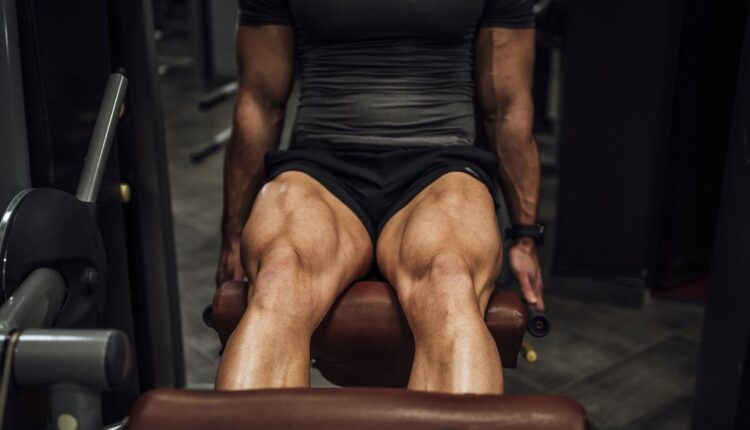This content is imported from youTube. You may be able to find the same content in another format, or you may be able to find more information, at their web site.
Following on from videos where he has ranked the best and worst exercises for growing your biceps, back, and glutes, strength coach and Athlean-X founder Jeff Cavaliere C.S.C.S. is now categorizing all of the exercises that are best for building your quads, starting from the worst and working his way up. That means quad builders specifically, rather than moves which might be good leg exercises overall. Here’s his ranking.
Worst
“Sissy” squat
While this can be a good knee-builder, Cavaliere doesn’t rate the “sissy” squat in terms of what it can do for your quads. “It’s never going to create the kind of hypertrophy you’re looking for,” he says.
Smith machine squat
“This is not the way to squat,” says Cavaliere. “We understand that the best path for the bar is vertical, but doing it on a Smith machine is going to force your verticality to happen in a way that you don’t want it to.” He points out that biomechanically, everybody has slightly different joints and limbs, and getting to the bottom of the squat will require a little bit of movement at the joints unique to us.
Better
Dumbbell drop squat
This is one of Cavaliere’s favored squat variations, and notes that it is especially good for beginners due to its simplicity. “The issue is load,” he says. “There’s not a whole hell of a lot of load you can handle with a dumbbell like this.”
Goblet squat
While this exercise has its perks, Cavaliere points out that people are more likely to fatigue earlier in the thoracic spine area than in their quads while completing the goblet squat. Taking this move to failure is essential for building your quads, but again, you’re limited in terms of how much weight you can add.
Heavy resistance bike
If your go-to cardio at the end of a workout is the stationary bike, that’s great: but you need to make sure you up the resistance to see any results in your quads.
Leg extensions
Leg extensions create hypertrophy in the quads and can be overloaded. However, there are some potential safety issues for people with tendonitis or knee issues, as it places a lot of force and tension on the patella. “It’s a good exercise for some, definitely not all,” says Cavaliere.
Better Still
Leg press
This can help you build quads as long as you’re doing it right. Cavaliere recommends lowering your feet on the platform to create greater knee flexion, and urges you not to push your legs using your hands or create leverage by pushing yourself back into the pad, as both of these things will take pressure off the muscle you’re trying to grow.
Dumbbell step-up
“This does a really good job of effectively hitting the quads, as long as you maintain that upright posture,” says Cavaliere, adding that it can be challenging at first to master the grip strength and balance that are both required.
Sled push/pull
In addition to torching your quads, sled training will also help you burn fat and improve your overall athleticism.
Dumbbell Spanish squat
This move gives you a chance to load up your squat as well as adding a resistance band around the knees. This achieves the same desired effect as the leg extension, but in a “closed chain” that keeps your feet on the floor. You can also turn this into a unilateral exercise—the TKE split squat—by putting the band around one leg and using a split stance.
Almost Best
Hack squat
“What we get on the hack squat machine is the foot pad being able to angle ourselves to mirror the angle of our body and create the dorsal flexion needed to create a more normal squat,” says Cavaliere. “By encouraging your feet to be out in front of you, by angling your body and giving you some additional support… all these things are creating a defined squat variation that is much more kind to your body.”
Dumbbell Bulgarian split squat
If you have any muscle imbalances, this unilateral move enables you to target one leg at a time, without having to bear the weight of a squat across your back.
High bar back squat
“When you put the bar up high on your upper traps, you get a more vertical positioning of your body as you descend into the squat,” explains Cavaliere. “That causes the quads to be more engaged… This is the king of all leg exercises.”
Dumbbell/barbell reverse lunge
“You can certainly load this exercise, as long as you’re not afraid to do so,” says Cavaliere. “If your balance is in question… remember to step not just back, but back and out, to maintain a wider base of support.”
Best
Front squat
This “premier variation” places the load more effectively onto the quads and away from the glutes and hamstrings, although good wrist mobility is needed in order to execute this with proper form.
Belt squat
The motion of this exercise mimics the same movement pattern as the drop squat, but with the added benefit of being able to load up the weight. “Don’t overlook the viability of the belt squat when it comes to building bigger quads,” he says.

Philip Ellis is a freelance writer and journalist from the United Kingdom covering pop culture, relationships and LGBTQ+ issues. His work has appeared in GQ, Teen Vogue, Man Repeller and MTV.


Comments are closed.